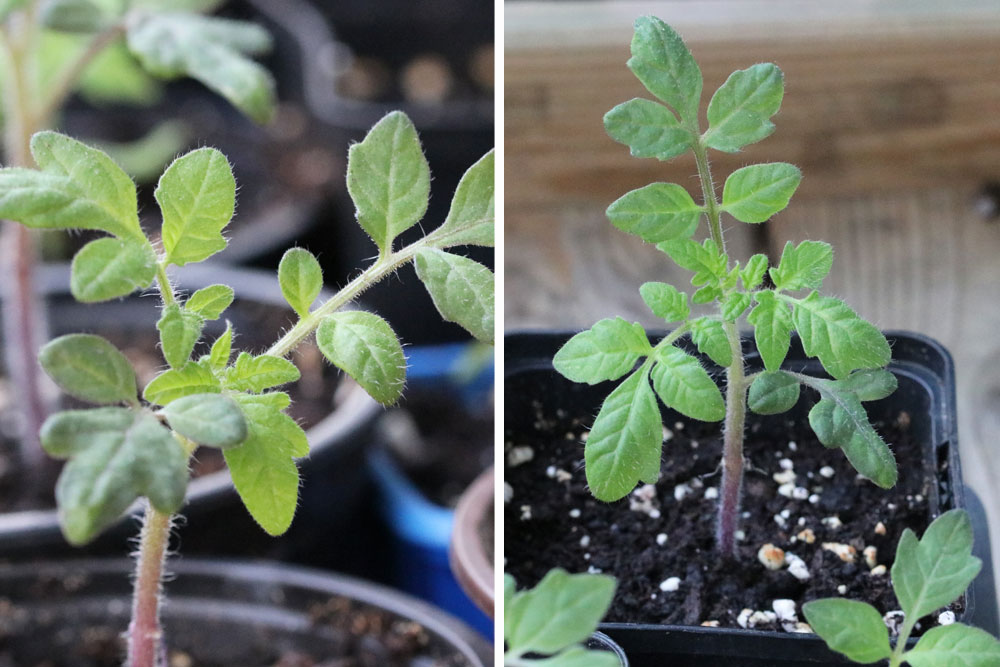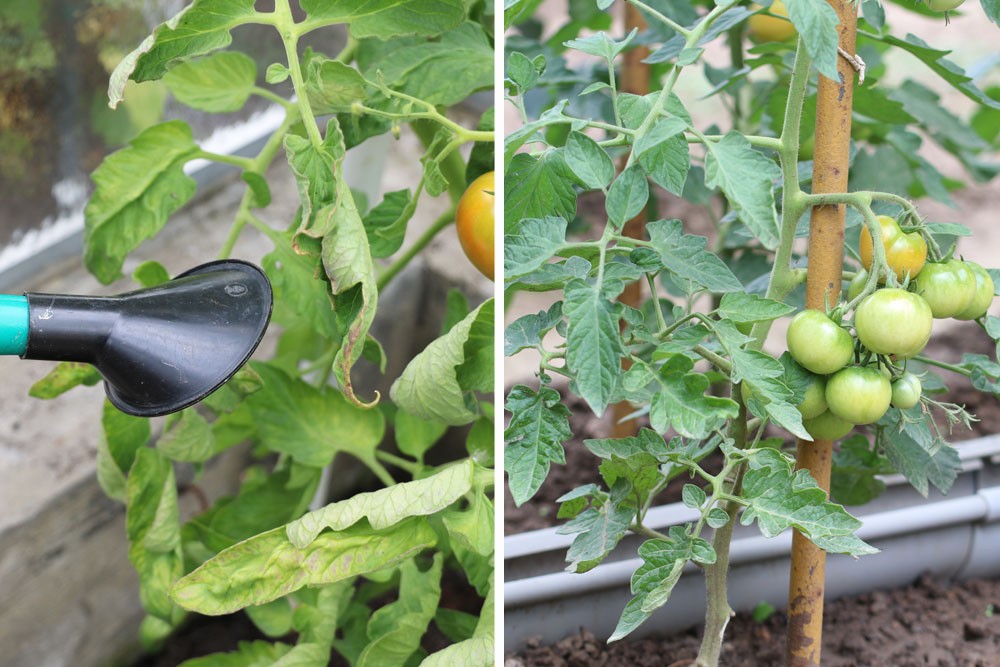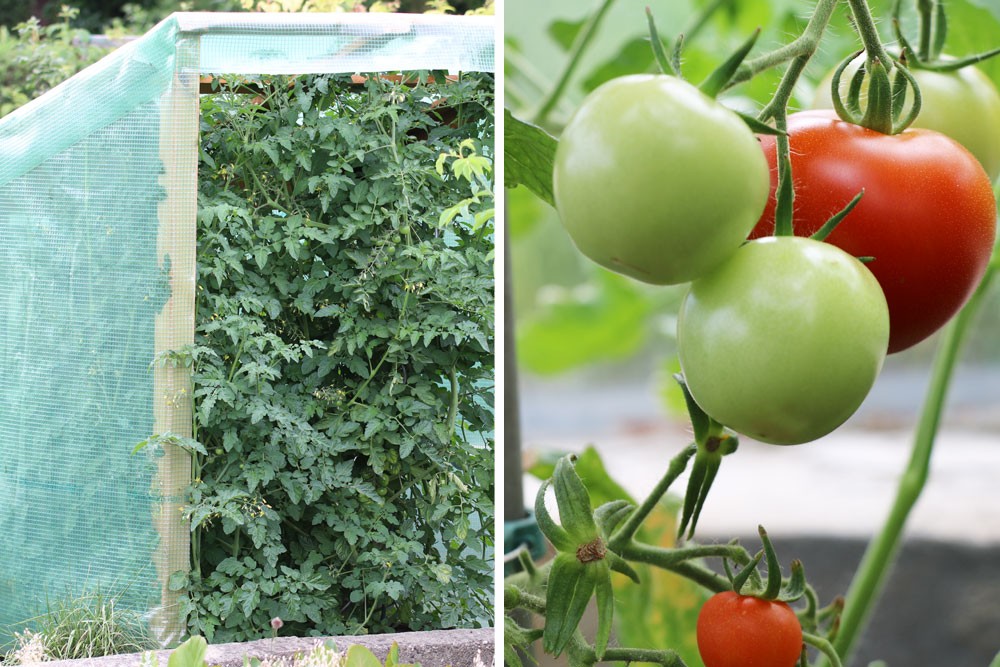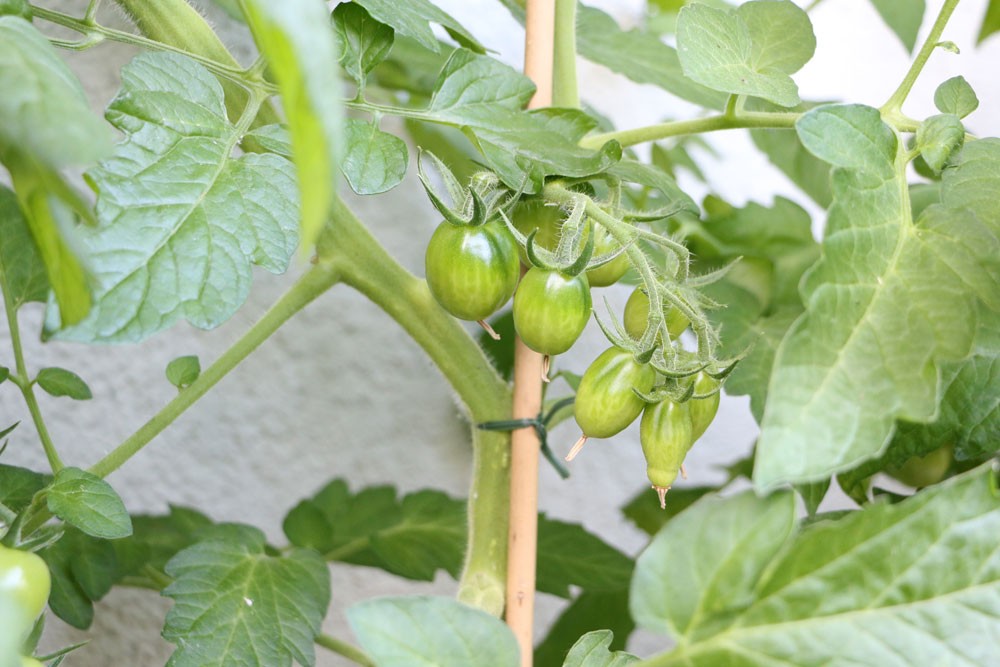In a nutshell – the more heat the better. Direct sun, on the other hand, does not need so much to harvest abundantly. Rather, it depends on the right amount of heat and light. Since the perfect spot with continuous brightness and moderate sunlight is hard to find, there are a few things to consider overall if tomato plants are to get the most out of themselves.
Contents
During germination
Tomato plants are usually grown in advance. To get strong seedlings, a sufficient amount of light is essential. It is advisable to deposit the seed tray in a windowsill, preferably facing south. For germination, the seed needs a temperature of at least 20 degrees. If the sunlight in March does not yet provide this, the heater will help. As soon as the first green appears, 16 degrees are enough. Also, sufficient light is not always guaranteed, here a daylight lamp provides relief.
Young tomatoes
In order for the small plant to thrive, plenty of light and moderate heat are still important. Otherwise, the plant will quickly become dented. Vergellen means that the growth goes up too quickly and the plant later threatens to topple over. If this does not happen, there is still a risk of a weak plant with a loss of harvest. The young plant cannot yet cope with too many hours of sunlight. The root system cannot yet absorb much water and the plant would die. Two to three hours of direct sun are sufficient.

- Tomatoes and full sun
- Tomatoes in the full sun
The tomato originates from South America. It loves heat. If you put your tomato plants outdoors and can choose a location that the sun’s rays reach all day, you can consider yourself lucky.
However, some points must be taken into account:
- do not plant in the direct vicinity of other nightshade plants
- do not plant too densely
- make sure the soil is light and rich in humus
- Sun protection
- Water properly
To keep the plant healthy, it is necessary to avoid infection with fungi or viruses of other solanaceous plants. Potatoes and peppers are among them. Rain does not harm the crop. To ensure rapid drying of the leaves, it is important that the tomatoes are not too dense. If they are wet for too long, there is a risk of fungal attack from this side.
The right soil is necessary to guarantee the drainage of water. Waterlogging promotes root diseases. Young plants are in danger of dying during a hot spell, as the roots are not yet fully developed. Leaves of the older plant are at risk of sunburn, recognizable by light green foliage. Later, the fruits may also be affected.

A parasol, for example, will do a good job of preventing excessive heat. Last but not least, always water the plants in the early morning or evening. Too high temperatures with the necessary wet are avoided in such a way.
The garden in partial shade
Probably most gardens cannot offer all-day sun. The candy apple is not bothered by this, as long as the points described above concerning neighbors and soil are given.
Furthermore important is:
- Observe planting distance
- Do not forget to prune
- Reduce the amount of water
- Regularly check for infestation
- Outside temperature
Keep an eye on the outside temperature
The more shade falls on the plant, the more attention should be paid to the planting distance and the more urgent the pruning. The drying of the leaves takes longer in the shade. The number of hours of sunshine is not so important. More important is the temperature. The need for water is reduced according to the number of hours of sunshine.
If the plants get too much water, in the worst case, the roots rot. Evaporation can lead to fungal attack. Since the tomato does not tolerate cold at all well, the planting in the bed should be postponed a few days if there is a fear that the nights or days will remain cold.
Greenhouse
Tomatoes in the greenhouse
Basically, the same criteria apply to growing tomatoes in the greenhouse as when growing them outdoors.
Special attention must be paid only to two things:
- Temperature
- Ventilation
Under film or glass, the temperature inside the greenhouse rises quickly, especially in the peak summer months of July and August. What was beneficial in the spring can now be detrimental. Heat causes water demand to increase, which in turn leads to increased evaporation. A high degree of evaporation causes damp leaves and increases the risk of fungal attack.

Accordingly, care must be taken to ensure adequate ventilation. In dry weather, two hours at least is necessary. Greenhouses made of glass should be provided with a sunshade where the tomatoes are located in very hot weather to prevent damage from sunburn.
Balcony
Tomato plants on the balcony
The tomato also thrives in a pot, on the balcony excellent. A real advantage, with plants in a pot is that they are quickly moved in case of need.
Value puts the tomato here, as in the open field on the right amount of:
- Sunshine hours
- Heat
- Water
Those who have their balcony facing south and find a sun-protected location – awning or eaves – will have little work with the plant. The higher balconies are, the shadier the plant should be placed, because the solar radiation increases. The only thing that should be paid special attention to watering.
In a tub or pot, the plant has a slightly higher water requirement than in the open, since the root can only access a limited area of moist soil. Too much water, however, promotes disease. In addition, it may be necessary to adjust the fertilization. The amateur gardener will develop a feeling for this over time.

For balconies with a different orientation, it is easy to put his tomatoes in the shade or “carry after” the sun – depending on the weather. If the tomato plant has three hours of sun a day, it is satisfied.
Exception
Bush tomatoes prove to be much hardier than their taller siblings. Especially cultivated wild tomatoes defy rain and sunshine. The perfectly prepared soil is also less important to them. Pruning and pulling up are not necessary. The only thing that these tomato plants need space.

